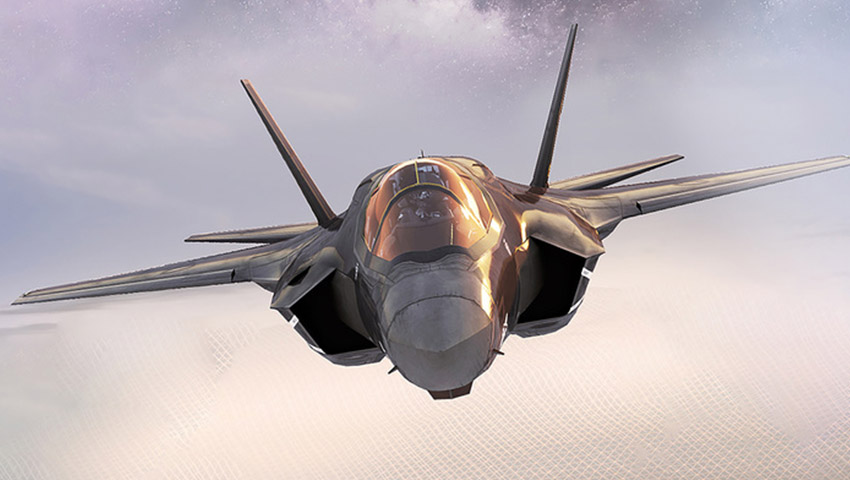The global F-35 fleet has has achieved 200,000 flight hours across global operations, a significant milestone that demonstrates the program’s progress and growing maturity. Within the same week, the F-35 Joint Program Office and Lockheed Martin also delivered the 400th production F-35.
To continue reading the rest of this article, please log in.
Create free account to get unlimited news articles and more!
The 400th production aircraft is a US Air Force F-35A, to be delivered to Hill Air Force Base, Utah. The production total is comprised of 283 F-35A, 87 F-35B and 30 F-35C deliveries. The 200,000 flight hours includes all F-35s in the fleet comprised of developmental test jets, training, operational, US and international aircraft. Among the three variants, approximately 125,850 hours were flown by the F-35A, 52,410 hours by the F-35B and 22,630 by the F-35C.
Vice Admiral Mat Winter, Program Executive Officer for the F-35 Joint Program Office, welcomed the program milestones, saying, "This 400th delivery is a significant milestone as the F-35 enterprise continues to grow and expand around the world. The collaborative efforts across the JPO, US services, partners and industry remain focused on driving costs down, quality up and faster delivery timelines across our development, production and sustainment lines of effort."
To date, 400 F-35s have been delivered and are now operating from 17 bases worldwide. More than 800 pilots and over 7,500 maintainers are trained. Ten nations are flying the F-35, eight countries have F-35s operating from a base on their home soil, seven services have declared initial operating capability, and three services have announced their F-35s have been used in combat operations.
The enterprise is on track to deliver 131 aircraft to the warfighter this year, up 40 per cent from last year. The F-35 program is expected to complete initial operational test and evaluation (IOT&E) this year and officially transition from the system development and demonstration phase and into full-rate production and focus on our development, production and sustainment lines of effort.
"The F-35 air system is a key enabler of our National Defense Strategy and delivers the combat proven, advanced capabilities our warfighters and partners need to meet mission requirements," VADM Winter added.
VADM Winter's comments are reinforced by Greg Ulmer, Lockheed Martin vice president and general manager of the F-35 Program, who said, "These milestones are a testament to the joint government, military and industry teams designing, building, sustaining, maintaining, operating and flying F-35s around the globe.
"The F-35 is delivering transformational capabilities to the warfighter and with every delivery and every flight hour, the enterprise gets smarter, more mature and more effective."
The Lockheed Martin F-35 JSF is billed as a catalyst for the fifth-generation revolution, changing the face and capability of the Royal Australian Air Force and the wider Australian Defence Force.
For the RAAF, the F-35A's combination of full-spectrum low-observable stealth coatings and materials, advanced radar-dispersing shaping, network-centric sensor and communications suites – combined with a lethal strike capability – means the aircraft will be the ultimate force multiplying, air-combat platform.
The F-35A – the variant chosen by the RAAF – will have a projected life of 30 years in service. Ten nations are currently flying F-35s, including the US, UK, Italy, Norway, Israel and Japan. The first of Australia’s F-35A aircraft are now based on home soil after a period of training and development at Luke Air Force Base in Arizona, plus an epic Pacific Ocean crossing in December 2018.
Over the coming years, Australia will purchase 72 of the advanced fifth-generation fighter aircraft as part of the $17 billion AIR 6000 Phase 2A/B program – which is aimed at replacing the ageing F/A-18A/B Classic Hornets that have been in service with the RAAF since 1985.

 Login
Login







